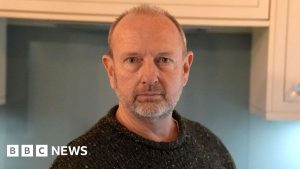Captain Aaron Ramsey faces a race against time to be fit for the start of Wales’ World Cup qualifying campaign.
The Cardiff City midfielder, 34, has not played since injuring his hamstring playing for Wales against Montenegro in September.
Having originally been scheduled to be back playing after two months, Ramsey had returned to training with Cardiff before suffering a setback.
Now the former Arsenal and Juventus playmaker could be struggling to be back in time for Wales’ opening World Cup qualifier against Kazakhstan on 22 March.
“Aaron is still rehabbing,” said Cardiff manager Omer Riza.
“His process is a bit slower because he’s picked up these injuries when he hasn’t been under loads of pressure in respect of really pushing it.
“He’s just been doing his rehab and I think it might be March time for Aaron [to return].”
Cardiff are also without midfielder David Turnbull at the moment after the Scotland international had surgery on a hamstring injury in December.
It was feared the former Celtic player could miss the rest of the season but Riza hopes to have Turnbull available before then.
“Initially it was looking like it could be [the end of the season]. It’s still quite long but he’s had the operation and walking around,” the Cardiff boss added.
“He’s not feeling any pain so once that happens he can progress with his strength work and rehab work. Hopefully it will be March or April, so the back end of the season, but there is potential he could feature before the end of the season.”

























+ There are no comments
Add yours